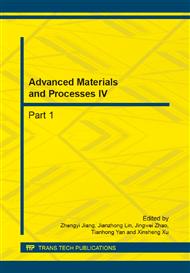[1]
V.G. Gagarin: Teplofizicheskie problemyi sovremennyih stenovyih ograzhdayuschih konstruktsiy mnogoetazhnyih zdaniy (Akademiya. Arhitektura i stroitelstvo, United States 2009).
Google Scholar
[2]
V.G. Gagarin, V.V. Kozlov: O normirovanii teplopoter cherez obolochku zdaniya (Akademiya. Arhitektura i stroitelstvo, United States 2010).
Google Scholar
[3]
A.S. Gorshkov: The energy efficiency in the field of construction: questions of norms and standarts and solutions for the reduction of energy consumption at buildings (Magazine of Civil Engineering, Russia 2010).
Google Scholar
[4]
A.S. Gorshkov, A.A. Gladkih: Meropriyatiya po povyisheniyu energoeffektivnosti v stroitelstve (Academia. Arhitektura i stroitelstvo, United States 2010).
Google Scholar
[5]
A.S. Gorshkov: The energy efficiency in the field of construction: questions of norms and standarts and solutions for the reduction of energy consumption at buildings (Magazine of Civil Engineering, Russia 2010).
Google Scholar
[6]
D.V. Nemova: The analysis of expediency of increase in the thickness of the Insulant in systems of rear ventilated facades with a view of Power efficiency increase (Vestnik Moskovskogo gosudarstvennogo stroitelnogo universiteta, Russia 2011).
Google Scholar
[7]
N.I. Vatin, D.V. Nemova: Increase of power efficiency of buildings of kindergartens (Construction of Unique Buildings and Structures, Russiia 2012).
Google Scholar
[8]
D.N. Tseytin, D.V. Nemova, E.V. Kurasova: Autonomous power installation with complex power effective electroproviding (Construction of Unique Buildings and Structures, Russiia 2013).
Google Scholar
[9]
M.R. Petrichenko: Nonsteady filtration in a uniform soil mass (Power Technology and Engineering, United States 2012).
Google Scholar
[10]
M.R. Petrichenko, V.N. Bukhartsev: Problem of filtration in a uniform rectangular soil mass is solved by variational principles (Power Technology and Engineering, United States 2012).
DOI: 10.1007/s10749-012-0329-6
Google Scholar
[11]
V.N. Bukhartsev, M.R. Petrichenko: Approximation of the depression curve of the inflow to an ideal trench (Power Technology and Engineering, United States 2011).
DOI: 10.1007/s10749-011-0193-9
Google Scholar
[12]
M.R. Petrichenko, N.S. Khar'kov: Experimental study of the pumping action of helical flow (Technical Physics, Russia 2009).
Google Scholar
[13]
V.N. Bukhartsev, M.R. Petrichenko: Condition of mechanical-energy balance of an integral flow with a variable rate (Power Technology and Engineering, United States 2001).
Google Scholar
[14]
M.R. Petrichenko: Convective heat and mass transfer in combustion chambers of piston engines. Basic results (Heat transfer. Soviet research, United States 1991).
Google Scholar
[15]
R.M. Petrichenko, A.B. Kanishchev, L.A. Zakharov, B. Kandakzhi: Some principles of combustion of homogeneous fuel-air mixtures in the cylinder of an internal combustion engine (Journal of Engineering Physics, Holland 1990).
DOI: 10.1007/bf00870411
Google Scholar
[16]
R.M. Petrichenko, A. Yu. Shabanov: Hydrodynamics of oil film under internal combustion engine piston rings (Trudy LPI, Russia 1985).
Google Scholar
[17]
N.I. Vatin: Weight vector of a conduction transducer of a correlation flowmeter, Magnetohydrodynamics New York, NY (1985).
Google Scholar
[18]
N.I. Vatin, T.N. Mikhailova: Computation of cross correlation function of induced potential for developed turbulent flow with axisymmetric mean velocity profile, Magnetohydrodynamics New York, NY (1986).
Google Scholar
[19]
D.V. Nemova, V. Murgul, V. Pukhkal, N. Vatin: Reconstruction of administrative buildings of the 70's: The possibility of energy modernization (Journal of applied engineering science, Montenegro 2014).
DOI: 10.5937/jaes12-5610
Google Scholar
[20]
A. Borodinecs, B. Gaujena: The implementation of building envelopes with controlled thermal resistance. 10th International Conference on Healthy Buildings (2012), pp.1715-1722.
Google Scholar
[21]
A. Kaklauskas, J. Rute. E. Zavadskas, A. Daniunas. V. Pruskus, J. Bivainis, R. Gudauskas, V. Plakys: Passive House model for quantitative and qualitative analyses and its intelligent system (Energy and Buildings, Netherlands 2012).
DOI: 10.1016/j.enbuild.2012.03.008
Google Scholar


